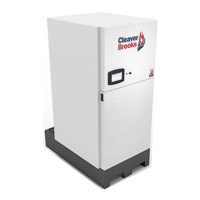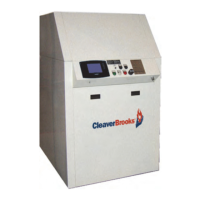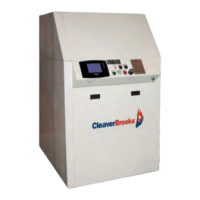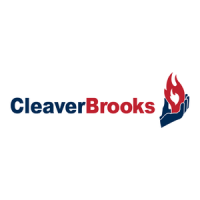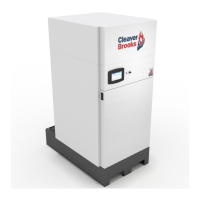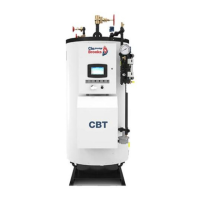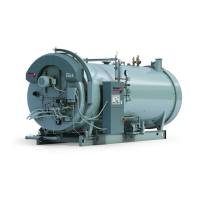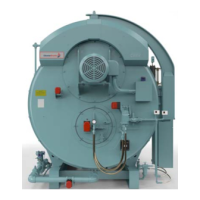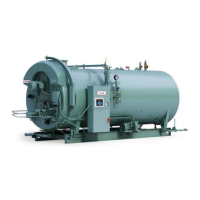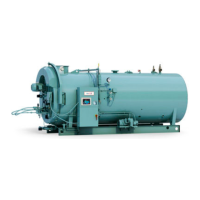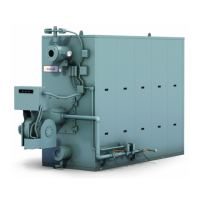Model CFC ClearFire Commercial Boilers
27 Rev. 05-2012
Water Treatment Even though hot water systems are "closed", some amount of make-up water (up to
10%) will be introduced. This more often than not happens from seal leaks of
pumps, or other minimal leaks from valves etc., that go unnoticed. Therefore,
proper water chemistry of a hot water boiler is necessary for good operation and
longevity, particularly to ensure that free oxygen is removed to prevent waterside
corrosion (see Table B5-17).
Table B5-17. Model CFC Water Chemistry Requirements in accordance with ABMA
Glycol The Model CFC boiler may be operated with a solution of glycol and water. Where
glycols are added, the system must first be cleaned and flushed. Correct glycol
selection and regular monitoring of the in-use concentration and its stability is
essential to ensure adequate, long-term freeze protection, as well as protection
from the effects of glycol-derived corrosion resulting from glycol degradation.
Typically, ethylene glycol is used for freeze protection, but other alternatives exist,
such as propylene glycol. Glycol reduces the water-side heat capacity (lower
specific heat than 100% water) and can reduce the effective heat transfer to the
system. Because of this, design flow rates and pump selections should be sized
with this in mind.
Generally, corrosion inhibitors are added to glycol systems. However, all glycols
tend to oxidize over time in the presence of oxygen, and when heated, form
aldehydes, acids, and other oxidation products. Whenever inadequate levels of
water treatment buffers and corrosion inhibitors are used, the resulting water glycol
mixture pH may be reduced to below 7.0 (frequently reaching 5) and acid corrosion
results. Thus, when pH levels drop below 7.0 due to glycol degradation the only
alternative is to drain, flush, repassivate, and refill with a new inhibited glycol
solution.
The following recommendations should be adhered to in applying ClearFire model
CFC boilers to hydronic systems using glycol:
1) Maximum allowable antifreeze proportion (volume %):
50% antifreeze (glycol)
50% water
Parameter Limit
Glycol 50%
pH 8.3 - 9.5
Nitrates 50 mg/liter
Sulphates 50 mg/liter
Chloride 30 mg/liter
Oxygen 0.1 mg/liter
Specific Conductivity
3500 mmho/cm
Total Hardness <10 ppm
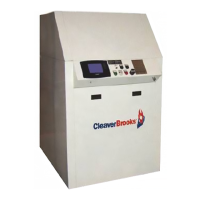
